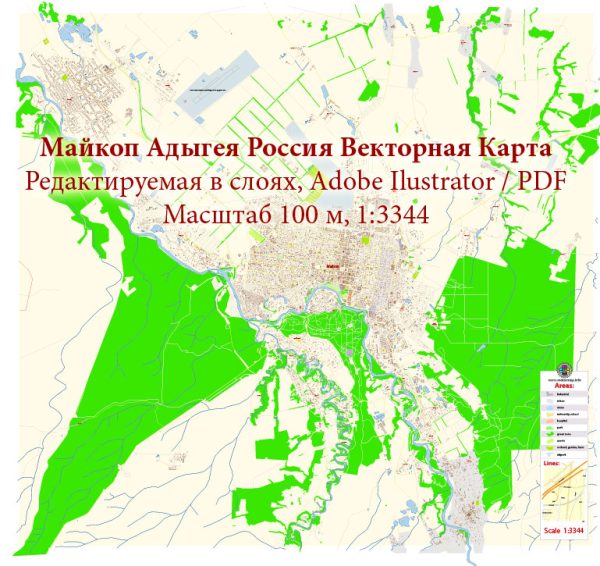Maykop is the capital city of the Republic of Adygea, which is a federal subject of Russia. The city has a rich history that reflects the cultural and historical heritage of the Adyghe people, who are the indigenous inhabitants of the region. Here is a brief overview of the history of urban development in Maykop:
- Ancient Times: Maykop and its surrounding region have a history dating back to ancient times. Archaeological evidence suggests that the area was inhabited by various cultures, including the Maikop culture, which existed around 3600–2500 BCE. The Maikop people left behind burial mounds and artifacts, providing insights into the early history of the region.
- Medieval Period: The area witnessed various historical developments during the medieval period. It was part of the Khazarian Khaganate and later became part of the Mongol Empire. The region also experienced the influence of the Crimean Khanate and the Ottoman Empire.
- Circassian Influence: The Circassian people, including the Adyghe, have a significant presence in the region. Maykop became an important center for the Adyghe people, contributing to the cultural and economic development of the area.
- Russian Expansion: In the 19th century, the Russian Empire expanded into the North Caucasus region, including the territory that is now Adygea. The incorporation of the area into the Russian Empire brought about changes in governance, infrastructure, and urban planning.
- Soviet Era: The Soviet period saw further development and modernization of Maykop. Industrialization, the establishment of educational institutions, and the implementation of Soviet urban planning principles contributed to the growth of the city.
- Contemporary Period: After the dissolution of the Soviet Union, Maykop became the capital of the Republic of Adygea, which was formed in 1991. The city has continued to develop, with a focus on preserving its cultural heritage while embracing modernization. The diverse cultural influences, including Russian and Circassian, are reflected in the city’s architecture, cuisine, and traditions.
Today, Maykop is a regional center with a mix of historical landmarks, cultural institutions, and modern infrastructure. The city serves as the administrative, cultural, and economic hub of the Republic of Adygea, contributing to the overall diversity and vibrancy of the North Caucasus region.


 Author: Kirill Shrayber, Ph.D.
Author: Kirill Shrayber, Ph.D.